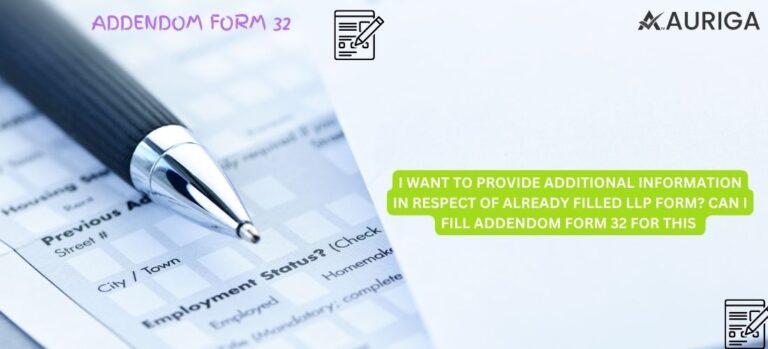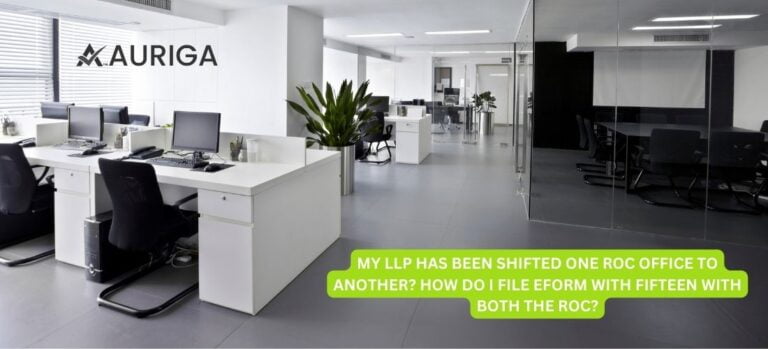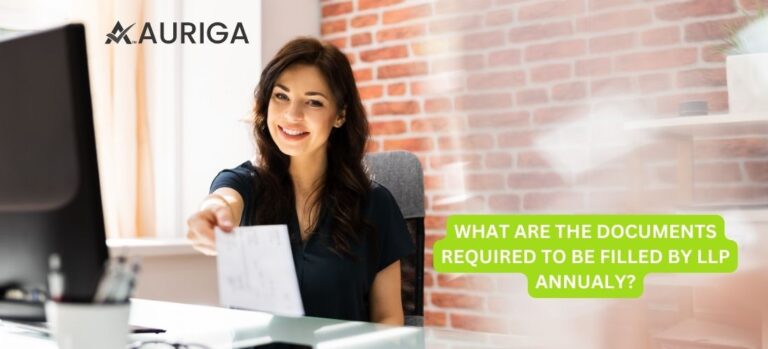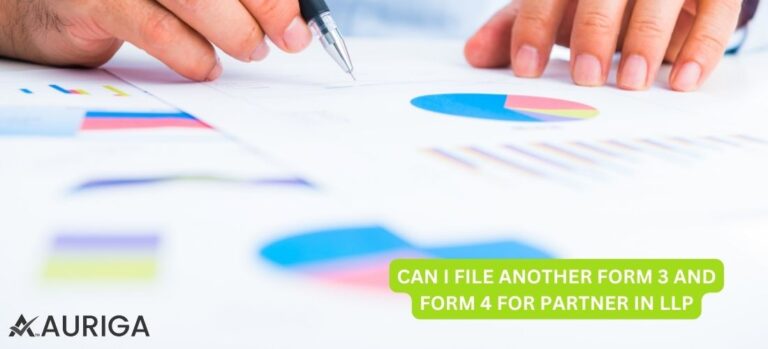
WHAT IS STATEMENTS OF ACCOUNT AND SOLVENCY AND WEATHER IT HAS A PRESCRIBE FORMAT
Introduction
ToggleWHAT IS STATEMENTS OF ACCOUNT AND SOLVENCY AND WEATHER IT HAS A PRESCRIBE FORMAT
A Statement of Account and Solvency is a financial document typically required for annual filings by limited liability partnerships (LLPs) in India. It provides details about the LLP’s financial position, including assets, liabilities, and solvency as of the end of the financial year. This statement must be filed with the Registrar of Companies (RoC) within the prescribed time frame. While there isn’t a specific prescribed format for the statement, it generally includes key financial information and may require certification by designated partners. Compliance with filing requirements ensures transparency and accountability in LLP operations. Visitofficialwebsite
STATEMENTS OF ACCOUNT
A statement of account is a financial document that provides a summary of financial transactions between two parties over a specific period. It is commonly used in business-to-business (B2B) transactions, especially between a supplier and a customer. The purpose of a statement of account is to keep both parties informed about the status of their financial relationship. Here are some key points to understand about statements of account:
Transaction Details: It includes details of invoices, payments, credits, and debits related to the specific business relationship.
Transaction Dates: The statement of account typically covers a specific time frame, such as a month or a quarter, and lists transactions chronologically within that period.
Balance Information: It calculates the outstanding balance, showing how much is owed or how much is due after each transaction.
Reconciliation: It helps in reconciling accounts and resolving discrepancies or disputes between the parties involved.
SOLVENCY STATEMENTS
A solvency statement is a declaration made by a company’s management or directors to confirm that the company is solvent, meaning that its assets exceed its liabilities. This statement is important in the context of corporate finance and insolvency law. Here are some key points to understand about solvency statements:
Purpose: Solvency statements are typically prepared in situations where a company is undergoing significant financial transactions, such as mergers, acquisitions, or the payment of dividends. They serve to assure stakeholders that the company can meet its financial obligations.
Legal Requirement: In many jurisdictions, there are legal requirements regarding solvency statements. For example, directors may be required to make a solvency statement before authorizing certain financial transactions.
Contents: A solvency statement typically includes a declaration by the directors stating that, in their opinion, the company is solvent and can meet its obligations. It may also provide details about the company’s assets, liabilities, and the basis for their solvency assessment.
Consequences: Making a false or misleading solvency statement can have legal consequences, so it is a serious matter that company directors must take seriously.
What is Form 8 statement of account solvency and charges
Form 8, also known as the “Statement of Account and Solvency and Particulars of Annual Return of Limited Liability Partnership (LLP),” is a document prescribed by the Limited Liability Partnership (LLP) Act, used by LLPs to file their annual return with the Registrar of Companies (RoC) in India. Here are some key points regarding Form 8:
Annual Filing Requirement: LLPs are required to file Form 8 with the RoC annually within 60 days from the end of the financial year. The financial year for LLPs typically ends on March 31st of each year.
Contents of Form 8:
- Statement of Account and Solvency: This section of Form 8 contains details about the LLP’s financial position, including its assets, liabilities, and solvency as of the end of the financial year.
- Particulars of Annual Return: This section includes information about the LLP’s partners, designated partners, changes in partners’ details, capital contribution, profit sharing ratio, etc.
- Details of Charges: Form 8 also requires LLPs to provide details of any charges registered or modified during the financial year, including the nature of the charge, the assets charged, the name of the charge holder, etc.
Certification: Form 8 must be certified by at least two designated partners of the LLP, affirming that the information provided in the form is true, accurate, and complete to the best of their knowledge and belief.
Filing Deadline: LLPs must file Form 8 within 60 days from the end of the financial year to avoid penalties for late filing. Failure to file Form 8 within the prescribed deadline may result in penalties and other legal consequences.
Electronic Filing: Form 8 is typically filed electronically through the LLP portal maintained by the Ministry of Corporate Affairs (MCA). LLPs must register on the portal and obtain a Digital Signature Certificate (DSC) to file Form 8 online.
Public Disclosure: Once filed, the information provided in Form 8 becomes part of the public record and is accessible to anyone who wishes to inspect the LLP’s filings with the RoC. This helps ensure transparency and accountability in LLP operations.
In summary, Form 8 is an important annual filing requirement for LLPs in India, providing details about the LLP’s financial position, partners, and charges registered during the financial year. Compliance with the filing requirements helps LLPs fulfill their regulatory obligations and maintain good standing with the authorities.
What is Form 8 and Form 11
In the context of limited liability partnerships (LLPs) in India, Form 8 and Form 11 are both important documents that LLPs are required to file annually with the Registrar of Companies (RoC). Here’s an overview of each form:
Form 8 (Statement of Account and Solvency):
- Form 8 is a document that LLPs use to file their annual return with the RoC.
- It includes details about the LLP’s financial position, including its assets, liabilities, and solvency as of the end of the financial year.
- Form 8 also contains particulars of the LLP’s annual return, such as information about partners, designated partners, changes in partners’ details, capital contribution, profit sharing ratio, etc.
- LLPs must file Form 8 within 60 days from the end of the financial year to comply with regulatory requirements.
- The form must be certified by at least two designated partners of the LLP, confirming the accuracy and completeness of the information provided.
- Filing Form 8 electronically through the LLP portal maintained by the Ministry of Corporate Affairs (MCA) is the usual practice.
2. Form 11 (Annual Return of LLP):
- Form 11 is another annual filing requirement for LLPs in India.
- It serves as the LLP’s annual return and provides information about the LLP’s partners, designated partners, and changes in partner details during the financial year.
- Form 11 also includes details about the LLP’s registered office address, principal place of business, and other basic information.
- LLPs must file Form 11 within 60 days from the end of the financial year to comply with regulatory requirements.
- Similar to Form 8, Form 11 must be certified by at least two designated partners of the LLP, confirming the accuracy and completeness of the information provided.
- LLPs file Form 11 electronically through the LLP portal maintained by the Ministry of Corporate Affairs (MCA).
In summary, both Form 8 and Form 11 are annual filing requirements for LLPs in India, providing information about the LLP’s financial position, partners, and other key details. Compliance with these filing requirements is essential for LLPs to fulfill their regulatory obligations and maintain good standing with the authorities.
What is statement of account and solvency
A statement of account and solvency is a financial document prepared by a company’s management or its authorized representatives. It typically includes details about the company’s financial position, assets, liabilities, and equity as of a specific date. Here are some key points regarding the statement of account and solvency:
Financial Position: The statement provides an overview of the company’s financial position, including its assets (such as cash, investments, inventory, and property), liabilities (such as loans, accounts payable, and accrued expenses), and equity (the difference between assets and liabilities).
Preparation: The statement of account and solvency is usually prepared by the company’s management or financial officers, often with the assistance of external auditors or accounting professionals. It is typically prepared annually or at other specified intervals, such as before a significant transaction or event.
Purpose: The statement of account and solvency serves several purposes, including providing stakeholders (such as shareholders, creditors, and regulators) with an overview of the company’s financial health and performance. It helps assess the company’s ability to meet its financial obligations and its overall solvency.
Contents: The statement typically includes various financial statements and reports, such as the balance sheet, income statement, cash flow statement, and notes to the financial statements. These documents provide detailed information about the company’s financial activities and performance during the reporting period.
Certification: In many jurisdictions, the statement of account and solvency must be certified by the company’s directors or authorized officers, affirming that the information provided is accurate and complete to the best of their knowledge and belief. This certification adds credibility and reliability to the financial information presented.
Regulatory Compliance: Companies may be required by law or regulation to prepare and file a statement of account and solvency with the relevant regulatory authorities, such as the Registrar of Companies (RoC) or securities regulators. Compliance with these requirements helps ensure transparency and accountability in financial reporting.
Due Diligence: The statement of account and solvency may also be used in due diligence processes, such as during mergers and acquisitions, financing transactions, or other business transactions. Interested parties may review the statement to assess the company’s financial health and evaluate potential risks and opportunities.
In summary, the statement of account and solvency is a crucial financial document that provides stakeholders with insight into a company’s financial position, performance, and solvency. It helps ensure transparency, accountability, and regulatory compliance in financial reporting and serves as a valuable tool for decision-making and risk assessment.
Can banks give solvency certificate
Yes, banks can issue solvency certificates to individuals or businesses under certain circumstances. A solvency certificate is a document issued by a financial institution, such as a bank, confirming the financial solvency or liquidity of an individual or entity. Here are some key points regarding solvency certificates issued by banks:
Purpose: Solvency certificates are typically required for various financial transactions, legal proceedings, or regulatory compliance purposes. For example, individuals or businesses may need to provide a solvency certificate when participating in government tenders, applying for loans, obtaining visas for international travel, or fulfilling other financial obligations.
Financial Assessment: To issue a solvency certificate, banks typically assess the financial health and stability of the individual or entity requesting the certificate. This assessment may involve reviewing financial statements, bank account balances, credit history, assets, liabilities, and other relevant financial information.
Criteria: The criteria for issuing a solvency certificate may vary depending on the requirements of the requesting party or the purpose of the certificate. Banks may consider factors such as the applicant’s creditworthiness, collateral assets, repayment capacity, and overall financial stability before issuing the certificate.
Certification Process: Banks usually have specific procedures and documentation requirements for issuing solvency certificates. Applicants may be required to submit relevant documents, such as bank statements, income tax returns, audited financial statements, or proof of assets and liabilities.
Validity: Solvency certificates issued by banks typically have a specific validity period, after which they may expire. The validity period may vary depending on the requirements of the requesting party or the purpose of the certificate.
Confidentiality: Banks are required to maintain confidentiality and discretion when issuing solvency certificates. They must ensure that the information provided in the certificate is accurate and protected from unauthorized disclosure to maintain the privacy and integrity of the applicant’s financial information.
Legal Standing: Solvency certificates issued by banks carry legal standing and can be used as evidence of financial solvency or liquidity in various legal, financial, or administrative proceedings. However, the weight and acceptance of the certificate may depend on the specific requirements of the requesting party or the governing laws and regulations.
In summary, banks can issue solvency certificates to individuals or businesses based on their financial assessment and evaluation. These certificates serve as evidence of financial stability and liquidity and are often required for various financial and legal purposes.
ADVANTAGES AND DISADVANTAGES OF PRESCRIBE FORMAT OF ACCOUNT AND SOLVENCY
Advantages of Statements of Account:
Clarity and Transparency: Statements of account provide a clear and transparent record of financial transactions between parties, helping both parties understand their financial relationship.
Record Keeping: They serve as an essential tool for record-keeping, making it easier to track payments, credits, and debits over a specific period.
Dispute Resolution: In case of disputes or discrepancies, a statement of account can be used as evidence to resolve issues and reconcile accounts.
Financial Planning: They aid in financial planning by giving a snapshot of outstanding balances, helping businesses manage cash flow.
Customer Relations: Sending regular statements of account can foster positive relationships with customers by demonstrating transparency and professionalism.
Disadvantages of Statements of Account:
Administrative Burden: Preparing and sending statements of account can be time-consuming and require administrative effort, especially for businesses with numerous transactions.
Potential for Errors: Human errors in recording transactions or calculations can lead to inaccuracies in statements of account, potentially causing disputes.
Privacy Concerns: Statements of account may contain sensitive financial information, so there can be privacy concerns if they are not handled securely.
Advantages of Solvency Statements:
Legal Compliance: Making a solvency statement can ensure that a company complies with legal requirements when engaging in certain financial transactions, such as paying dividends or undertaking mergers and acquisitions.
Stakeholder Confidence: Solvency statements can instill confidence in shareholders, creditors, and other stakeholders that the company is financially stable and capable of meeting its obligations.
Risk Mitigation: By requiring solvency statements, it can help prevent companies from engaging in risky financial transactions that could lead to insolvency.
Disadvantages of Solvency Statements:
Legal Liability: Making a false or misleading solvency statement can have serious legal consequences for company directors, including personal liability.
Complexity: Preparing a solvency statement may require a detailed analysis of a company’s financial position, which can be complex and time-consuming.
Costs: There may be costs associated with obtaining professional advice or conducting financial assessments to make an accurate solvency statement.
Limited Scope: Solvency statements are typically used in specific financial transactions and may not provide a comprehensive view of a company’s financial health.

How do I file Form 8
Filing Form 8 for an LLP involves several key steps:
Prepare the Required Information: Gather all necessary information, including details about the LLP’s financial position, assets, liabilities, solvency, and particulars of the annual return.
Complete the Form: Fill out Form 8 with the relevant information. Ensure accuracy and completeness in providing the required details.
Certify the Form: At least two designated partners of the LLP must certify the accuracy and completeness of the information provided in Form 8.
Attach Supporting Documents: Include any necessary supporting documents, such as financial statements, bank statements, or other relevant records, as required by the RoC.
File Electronically: Submit the completed Form 8 electronically through the LLP portal maintained by the Ministry of Corporate Affairs (MCA). Pay the requisite filing fees, if applicable, and obtain an acknowledgment of submission.
By following these steps, LLPs can successfully file Form 8 and fulfill their annual filing requirements with the Registrar of Companies.
CONCLUSION PRESCRIBE FORMAT OF ACCOUNT AND SOLVENCY
Whether these statements have a prescribed format depends on various factors, including local regulations, industry practices, and the specific purpose of the document. In some cases, there may be legal requirements dictating the format and content, while in others, the format may be more flexible and subject to agreement between the parties involved.
HOW AURIGA ACCOUNTING HELP YOU TO PRESCRIBE FORMAT OF ACCOUNT AND SOLVENCY
Research Auriga Accounting: Start by visiting the official website or contacting the company directly to gather information about their accounting software or services. Look for any features related to financial reporting, including the preparation of Statements of Account and Solvency.
Request a Demo or Consultation: Many accounting software providers offer demonstrations or consultations to potential customers. Reach out to Auriga Accounting to inquire about a demo or consultation to understand how their platform works and whether it can assist you in preparing these financial statements.
Review Features and Templates: If Auriga Accounting offers features for financial reporting, explore their available templates and customization options. Determine whether they have specific templates or tools for creating Statements of Account and Statements of Solvency.
Inquire About Customization: Ask if Auriga Accounting allows for customization of financial statement formats. Depending on your specific needs or local regulations, you may need the flexibility to adapt the format to meet specific requirements.
Seek Professional Advice: When working with accounting software to prepare important financial documents like Statements of Account and Solvency, it’s advisable to consult with a certified accountant or financial professional. They can provide guidance on best practices and ensure that the statements meet legal and regulatory requirements in your jurisdiction.
Stay Updated: Keep in mind that accounting software and services may evolve over time, so it’s essential to stay updated on any new features, templates, or compliance changes offered by Auriga Accounting.












